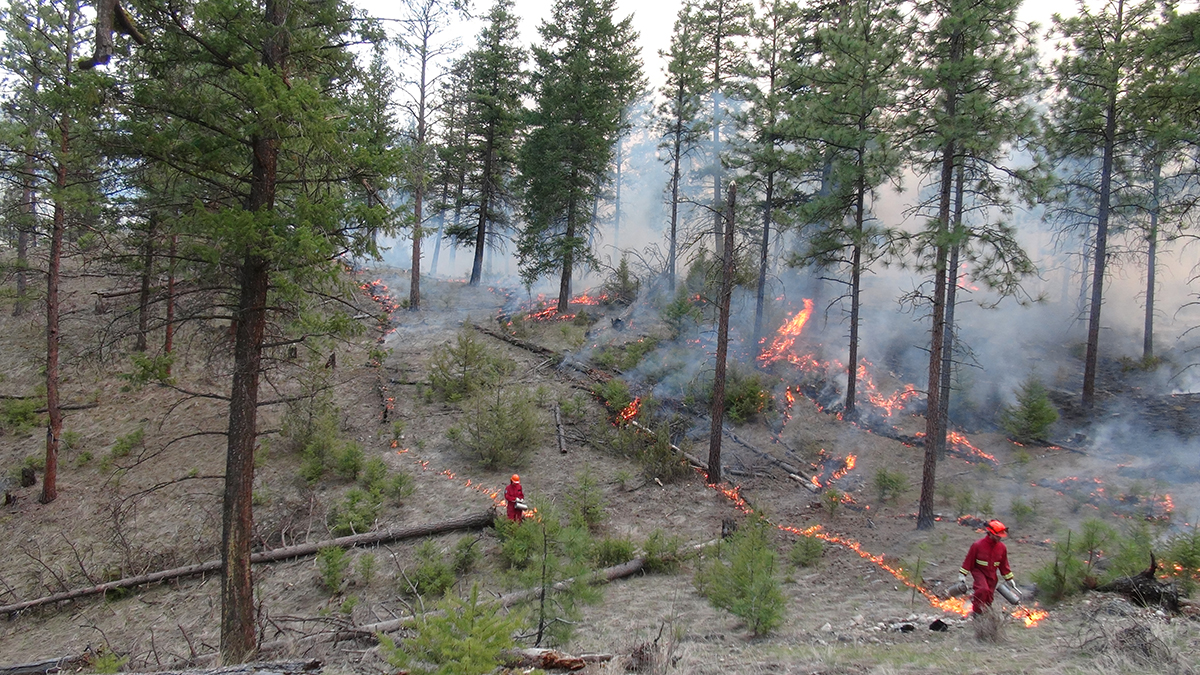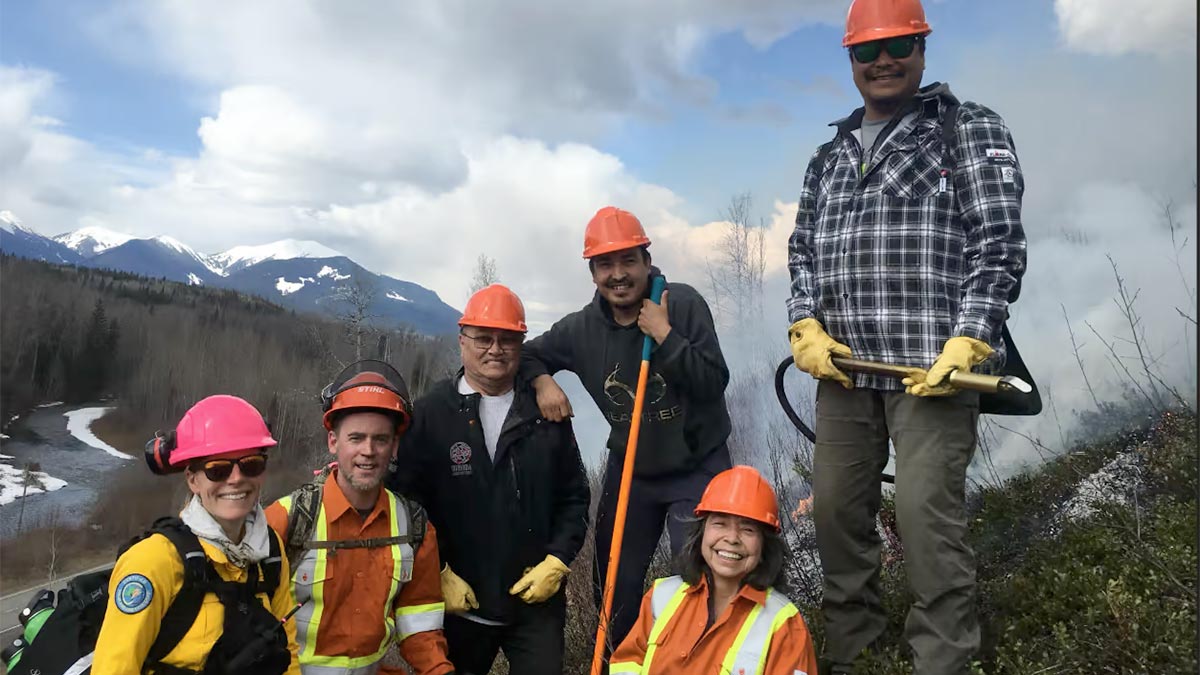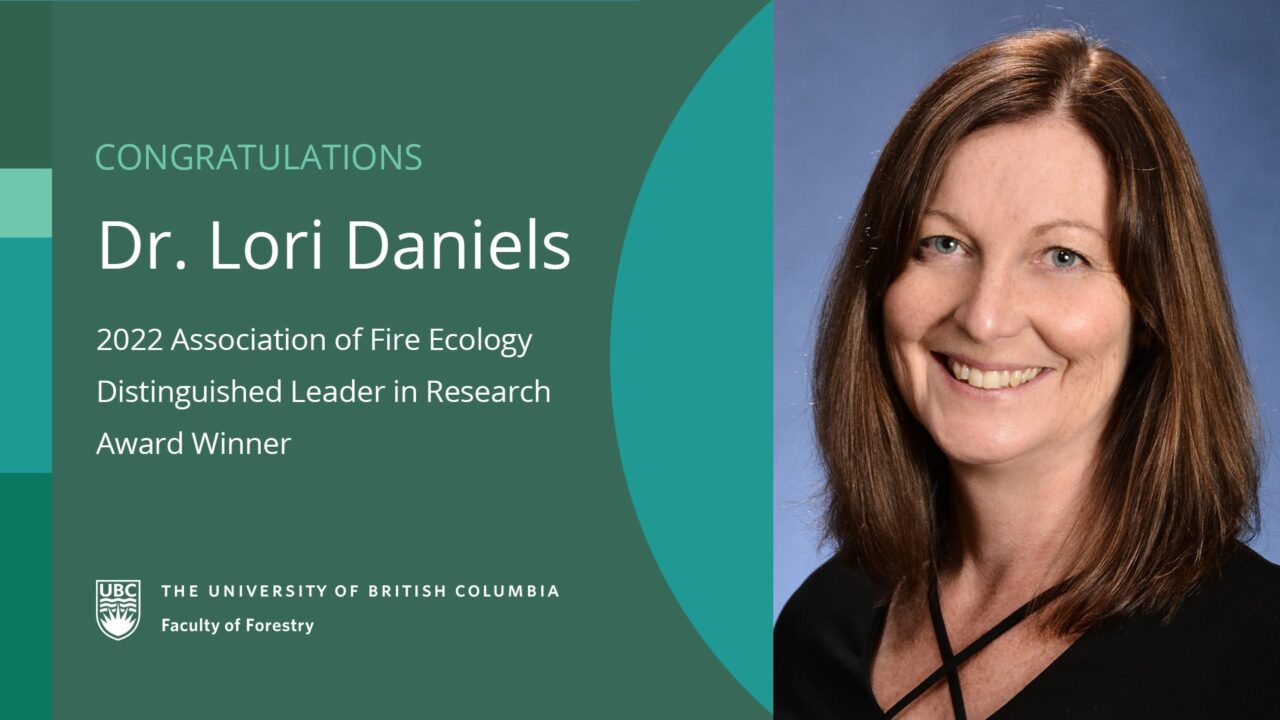Revolutionizing Wildfire Preparedness in BC: Centre for Wildfire Coexistence
UBC Forestry’s Centre for Wildfire Coexistence (CWC) responds to an escalating need to proactively adapt forestry and land management practices with the aim of restoring healthy and resilient forests, as communities adapt to a changing climate.
Led by Dr. Lori Daniels, Koerner Chair in Wildfire Coexistence at UBC, the Centre will support innovative approaches and novel discoveries co-created in collaboration with other research experts, Indigenous Knowledge Keepers, government agencies, private land owners and forest, fire and land management professionals.
Given our new climate reality, holistic and transformative changes to fire and forest management are urgently needed to achieve ecosystem and community resilience, and learn to coexist with wildfire.
The Centre aims to realize meaningful outcomes in the following areas:
- Create healthy and resilient forests through local- to landscape-level proactive management to help forests and communities adapt to a changing climate
- Prioritize proactive management and ecocultural restoration, including forest thinning, prescribed fire, and Indigenous cultural burning to increase forest and community resilience to megafires
- Build a robust community outreach and education program to share knowledge and ensure communities in fire-prone environments are prepared for wildfire
- Advance research co-led by Indigenous Knowledge Holders and Western scientists to share leading-edge advances with the global community
Fast Fact:
Landscape-level planning is the development of science-based land management plans for extensive areas within a region. The CWC will contribute to transformative changes across landscapes to increase forest heterogeneity and restore disrupted ecosystems by integrating Indigenous Knowledge with western science to improve resiliency to climate change.
The cost for wildfires in BC
| Year | Total Fires | Total Hectares Burned | Total Cost (millions) | State of Emergency (number of days) |
|---|---|---|---|---|
| 2023* | 2,251 | 2,840,571 | >$1billion | 38 |
| 2021 | 1,642 | 869,279 | $719 | 56 |
| 2018 | 2,117 | 1,354,284 | $615 | 23 |
| 2017 | 1,353 | 1,216,053 | $649 | 70 |
* as of November 20, 2023


Dr. Lori Daniels
Koerner Chair in Wildfire Coexistence at UBC
Dr. Daniels is an internationally recognized expert in forest ecology and the impacts of humans and climate change on wildfires. Dr. Daniels is familiar with British Columbia’s diverse ecosystems and has a proven track record of Indigenous and community partnerships. As the Chair for Wildfire Coexistence, Dr. Daniels will be positioned as a go-to expert in wildfire.
Awarded the 2023 Association of Fire Ecology Distinguished Leader in Research Award and 2020 Killam Teaching Prize in Forestry, she is a proven public educator, having given over 250 presentations, workshops and field tours to forest professionals and community and school groups. Since 2015, she has conducted close to 300 media interviews as a specialist. In 2022, Dr. Daniels was a panelist on the “Expert Roundtable on Wildfire and Forest Resilience” held in conjunction with the UN General Assembly (UNGA77) release of their report on climate tipping points.
Wildfire affects the health and wellbeing of both human and wildlife populations.
When fires approach communities, they force evacuations and can lead to property loss or, more devastatingly, the loss of life. For example, two people lost their lives in a 2021 catastrophic wildfire that destroyed 90% of the Village of Lytton, BC.
Areas scorched by flames also displace wildlife, pushing some species closer to extinction. When inhaled, the fine particulate matter present in smoke can have negative health effects on individuals, particularly those with respiratory or cardiovascular disease.
A 2021 study published in Proceedings of the National Academy of Sciences found that up to 50 per cent of air pollution particulate matter 2.5 microns or smaller found in some western regions of the United States is caused by wildfire — levels that have been ramping up over the past decade.
However, some fire is essential for the maintenance of health forests.
While the megafires seen within the past decade are unprecedented in their scale and intensity, fire still plays an important role in forest health and renewal. It removes dry, woody debris from the forest floor that can fuel more intense blazes. It also clears the way for renewed plant growth, supporting forest rejuvenation and overall health.
Reconstructions from tree rings reveal that low-severity fires once maintained diverse, resilient forests across much of BC’s interior region. These fires were ignited by both lightning and Indigenous fire stewardship.
“Many of our tree species are adapted to diverse weather- and climate-related disturbances, such as fire, wind and insect outbreaks. But historical and evolutionary boundaries are being pushed.”
– Dr. Lori Daniels
Featured News

UBC Forestry to launch Centre for Wildfire Coexistence thanks to $5M donation from the Koerner family
UBC Forestry launches Centre for Wildfire Coexistence, exploring proactive wildfire management solutions with cutting-edge wildfire research.

Fighting Fire with Food
Project led by Gitanyow Nation in collaboration with UBC researchers explores how cultural burning and planting practices protect against catastrophic wildfire.

Lori Daniels Receives Association of Fire Ecology Distinguished Leader in Research Award
Dr. Lori Daniels' innovative and collaborative research has resulted in policy and practice impacts on forest and community resilience to wildfires.
